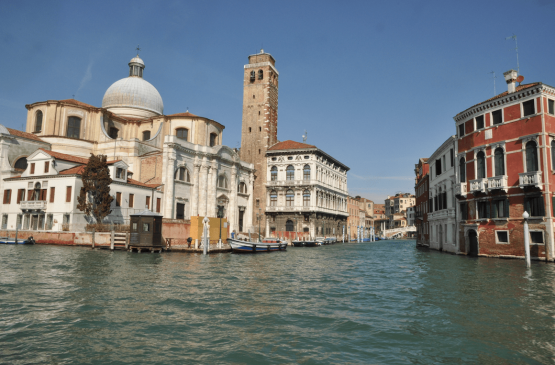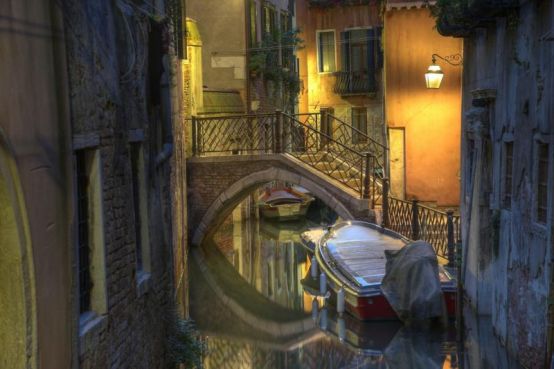The Venetians call it "Aqua Alta", church bells rings and sirens resound throughout the city centre of Venice warning on the impeding floods in Venice in arrival with the next high tide.The flooding of Venice, when it does happen, is only temporary lasting around 1 to 2 hours depending on the level of the tide. The floods in Venice do not take place everyday.
The high waters are related to many factors that are discussed below. You can enjoy visiting Venice all year round and the threat of floods should not prevent you from visiting the city. Just come prepared with a good pair of boots from November through January, and enjoy the spectacle, if it happens!
The city of Venice has always faced an on-going battle with mother nature in the form of the Venetian lagoon and the Adriatic sea. The Venetian Lagoon that completely encircles the city is the largest natural lagoon in Italy. It's brackish waters are extremely shallow, and there are only a few areas of the lagoon where man has intervened that the water depth is over a few feet.
“Aqua Alta” as its known by the Venetians is a regular occurrence in Venice. There are numerous factors that can play a role in creating the high waters that flood the city of Venice. The main culprit is the tidal flow of the Adriatic as it pushes water into the Lagoon. This tidal flow tends to be at its most influential at the beginning and end of the full moon cycle.
Although, typically, Venice if it does flood tends to flood around the changing of the seasons in the Fall and the Spring. November is normally the worst month for flooding in Venice, although, flooding is not uncommon through out the winter months. In 2004, we even had high water flooding the streets of Venice in July.
After the influence of the tides, the winds blowing down from the Balkans or up from the Sahara can also play a major role in the floods of Venice. Pushing water on to the city, wave after wave until all the streets of Venice become flooded. Winds from the Sahara were the cause of floods on the first Sunday of November that took everyone in Venice by surprise. A forecasted 1.10 M above the regular water mark would cover St Marks and it environs, but when the water rose to 1.40 M ( up to 3ft of water in St Marks) everything was flooded.
Many shopkeepers and home owners were left stranded, and over the following days the streets of Venice were littered with all kinds of items damaged by the floods that owners had left out for the refuge collectors to take away. Humidity and the air temperature can also play a major role with the floods of Venice.
When its humid and unseasonably warm this can also assist in increasing the danger of high water and floods in Venice. During the third week of November this year, with the temperatures dipping below zero at night and without any humidity the water levels dropped down to as low as minus 0.70 M at low tide. In fact, the tide was so low you could almost walk to Venice across the exposed sand banks and marshes of lagoon from the mainland.
The last and probably the least important of the factors that can play a role in the high water and floods of Venice is rain. In the old days, when many major rivers flowed into the lagoon this factor would have played a more major role in the floods of Venice. But, nowadays, with these rivers redirected away from the lagoon, rain and precipitation play a minor role in the floods of Venice.
The city has always suffered from the problem of high water ‘acqua alta' however the threat of flooding has increased greatly over the years(in the past it would happen once every 3 to 4 years.) It is determined by a series of meteorological and man made factors.
Following a bad flood, the Doge Pietro Ziani had actually proposed moving citizens to Constantinople, conquered by Venice in 1204. The problem continued and in 1505 the Serenissima republic decided to set up a new council called the ‘Magistrato alle Acque' to look into water levels and movement. However it was not until 1867 that a system of registration of water levels was introduced.







